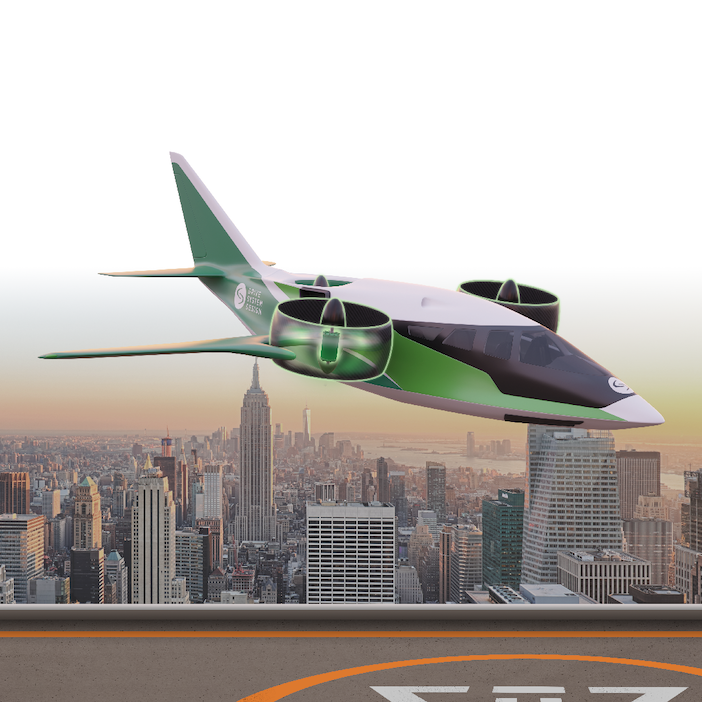The eVTOL industry is one of the fastest-moving sectors in aerospace and it is set for continued rapid growth. As a result, manufacturers are moving quickly to capitalize on this and obtain a competitive advantage.
Perhaps the biggest performance differentiator in this space will be the propulsion systems. Ultimately, this dictates the load capacity, range and speed. It also heavily influences cost.
As a relatively new sector, the eVTOL market is yet to find any common ground on electrified propulsion systems and has not progressed towards a set architecture. This is understandable as there is a myriad of choices to be made, including motor type, battery technology, rim-driven or hub-driven fans, the number of propulsion modules, multi-speed or direct drive, the list goes on.
There are literally hundreds of thousands of possible propulsion architecture combinations. This leaves a lot of scope to get things wrong.
As well as identifying the correct architecture, manufacturers are also balancing the use of bespoke elements, to produce a competitive solution, with off-the-shelf components, to meet their time-to-market and cost goals. At either end of this scale, how these components are integrated plays a key role in the system’s overall performance.
Simulation to increase understanding
The only realistic way to investigate and analyze all these options is through the use of simulation. However, key to getting accurate results isn’t just modeling the individual components but understanding the complex interactions throughout the entire system.
At Drive System Design, we have developed our own in-house simulation solution called ePOP (electrified Powertrain Optimisation Process). It evaluates electric propulsion architectures for a given eVTOL range, aircraft type, payload and flight profile.
We have used ePOP to study the trade-offs that must be made and highlight common questions being asked.
For example, what is the optimum size and number of propulsion modules for an eVTOL? Currently, many industry players are willing to absorb the additional mass of more modules to benefit from the potentially improved efficiency it offers.
Our study shows that this approach does indeed improve efficiency. Moving from four to eight propulsion modules doubles the powertrain mass but halves the energy consumed over a flight cycle.
However, our research also shows that a six module solution offers 75% of the same energy saving at half the increase in system mass. This highlights the need for optimization and finding a ‘sweet spot’ for a given application.
Design decisions
Another important consideration is rim-driven fans (RDF) versus hub-driven fans (HDF), each offering pros and cons. An RDF system can offer aerodynamic efficiency gains alongside the ability to more readily stack fan stages and introduce contra-rotating designs.
However, a RDF system necessitates a clean sheet design that will require certification. This can be challenging for start-ups, which make up a significant proportion of the eVTOL market.
The alternative is to use a conventional motor topology that can be leveraged from other sectors as part of a commercial off-the-shelf (COTS) HDF system.
An increasingly common question now being asked in this sector is whether or not to use a reduction gearbox. Can the weight penalty be counteracted by efficiency improvements? The short answer is yes, it can, but understanding where requires a thorough understanding of the overall system interactions.
Our case study showed that a direct drive design can limit the efficiency of the system and that a well-integrated reduction gear system solution can provide lower energy consumption over a flight profile despite the additional mass.
The other consideration to make is that although a transmission does add cost, weight and complexity it also provides significant flexibility in how best to achieve the overall energy consumption target. It does this by keeping the motor within it’s most efficient operating window for a higher proportion of the flight cycle.
In such a competitive market space it is critical to not only get it right the first time but also be the first to get it right. These two objectives can often be conflicting.
As a key performance differentiator, it will be unsurprising news that there is no one-size-fits-all electric propulsion solution for the eVTOL market. However, with a full-system approach to simulation and a thorough understanding of the complex system interactions, propulsion systems can be confidently optimized for a particular application during the concept phase of the project, way before investing in detailed engineering and hardware.





